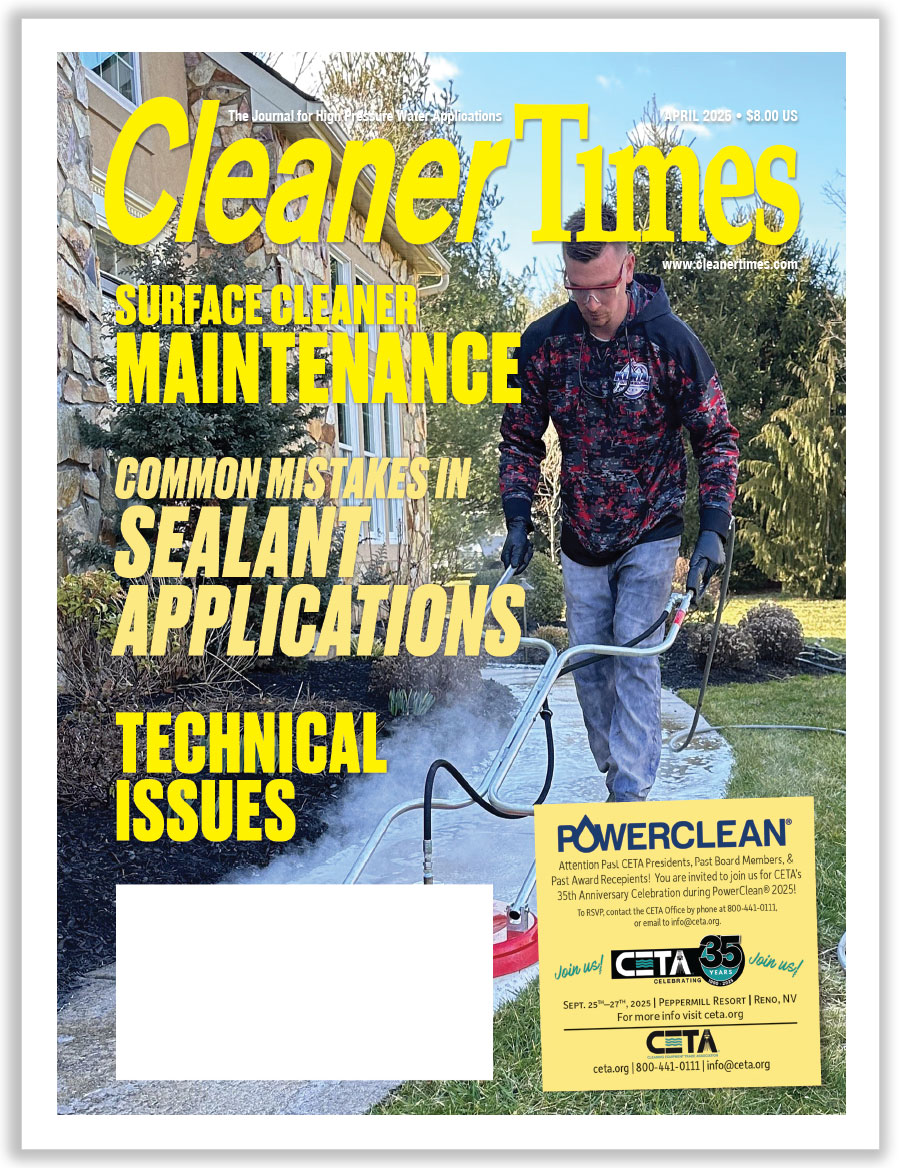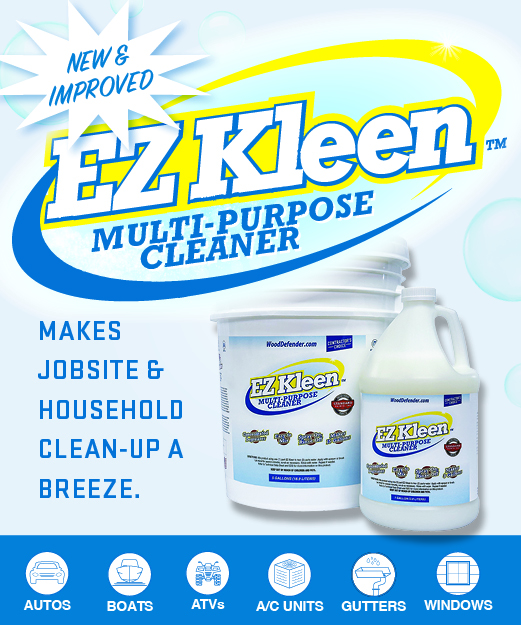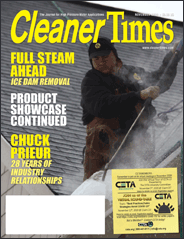
Handling an OSHA Inspection
by Diane M. Calabrese | Published April 2025

Imminent danger? Who would not want to know about it? The top priority of an OSHA inspection is to identify imminent danger situations in the workplace. The Occupational Safety and Health Administration aims to prevent, not to punish.
Awareness prevents injuries and deaths in the workplace, and safe practices hinge on awareness. There’s no reason to fear an OSHA inspection. Instead, realize that readiness for an inspection is merely safety in action.
“The best way to prepare for an inspection is to treat each day as inspection day,” says Michael Draper, PWNA safety and compliance director. “What that means is being proactive about your safety program and keeping it up to date each week.”
Be sure the safety program fits the workplace. “Every business has unique safety hazards that will have to be accounted for,” says Draper.
In anticipation of an inspection—in many instances simply a routine audit—a business should regularly evaluate the risks its employees encounter and be certain they are fully minimized. A routine approach matters.
Trying to shore up records when word arrives that an OSHA inspector is on the way or at the door will not do. Careful, quickly retrievable records of required safety meetings and safety updates are needed.
There is benefit in being audited by OSHA. The audit serves as “a measure of where your company is safety wise,” says Draper.
But Draper cautions that an audit passed is just one part of safety. “Checking every compliance box doesn’t mean it’s a safe company.”
The day-in and day-out practices, which include incorporating new hires and unusual conditions (e.g., weather), must include a mechanism for dealing with abrupt changes. Last week’s audit outcome is nothing more than history if a new hire arrives and disregards safety protocols.
Document and document again. That’s the advice of Drew Harbour, general manager at Chappell Supply and Equipment in Oklahoma City, OK.
Harbour has gone through both federal and state audits. Years before taking his current position, he served as safety manager for his company and worked with OSHA on voluntary audits each year.
“The best thing a business owner can do to be prepared for an OSHA inspection is document, document, document,” explains Harbour. “Every OSHA inspection will start with a document review process.”
There’s an option for business owners to get assistance directly from OSHA personnel who visit a workplace in an informal capacity to offer recommendations. Should the option be taken?
“Yes,” says Harbour. “We invite OSHA on site every year to perform a ‘voluntary’ audit.”
A business gains much from participating in the voluntary program. “The biggest benefit of these inspections is the fact that OSHA works with you as a company to ensure that your safety practices are effective and helps identify weaknesses you may not have known exist,” says Harbour.
“After a voluntary audit the non-enforcement officer will provide you with a list of findings and work with you to build your safety program to ensure that it meets all requirements,” explains Harbour. “This also helps show your company’s commitment to keeping employees safe.”
The pluses from a voluntary audit include another one of great interest. “Another benefit is that if you work with your auditor, OSHA will not send an enforcement audit team for a designated timeframe after the audit unless an infraction is incurred – [an infraction such as] death, amputation, or imminent danger situations or other workplace complaints,” says Harbour.
The voluntary audit takes time, of course, but it costs nothing.
Being Prepared
When is it okay to pile up boxes in front of a door? Never—not even for 60 seconds. Even if the intent is to move the boxes quickly, the temporary placement is still a safety violation.
Many seemingly innocuous things are actually safety lapses. That panel that has fallen from the ceiling is a safety issue. So is the newly washed floor in the shop that is not marked as such.
OSHA inspectors do not look only for the big things such as improperly stored chemicals: they notice all the small things. And a company is likely to be cited for issues regardless of how small.
Consequently, “the boxes were only going to be there for a minute” is not a valid argument. Someone may forget to move them. An exit way is blocked. It’s not a safe situation.
Consistent attention to safe practices is what OSHA wants to find when it visits. A dangling ceiling panel or a missing placard about a wet floor suggests inconsistency.
While it might seem too trivial a matter to remind employees not to block exits, where to find the fire extinguishers, and how to warn about slippery floors, it’s not. Regular safety meetings are mandated as a guard against complacency.
And when on site, inspectors will want to know that the regular meetings have been taking place. Document the meetings. In fact, document everything.
“Keep good records,” says Linda Chambers, brand and sales manager at GCE/Soap Warehouse Brand in Norcross, GA. “You need to make sure you can find things when an inspector comes in and starts asking questions.”
Perhaps records have been kept scrupulously. That’s not enough. They must be maintained meticulously.
“Being disorganized—not being able to produce materials inspectors are asking for or not maintaining the forms required, history of classes given, proof of employee training, etc.—puts up red flags and just increases the likelihood that an inspector will keep digging and find things to fine you for,” says Chambers. Make certain that records are accurate and immediately accessible.
Chambers provides a hypothetical example of how a problem could become a bigger problem during an OSHA inspection. “If after an incident you can immediately provide the records showing an employee’s training history, what your training covered, and the signed off sheets from the employee showing they were taught and knew the correct safety steps, things are more likely to go in your favor.”
The foregoing scenario would be the positive one, explains Chambers. “It is versus not having such records and having your entire training program put under a microscope and inspectors finding things other than what they came there for.”
Throughout any inspection, circumspection should be the rule. “Never overshare,” says Chambers. “Just like with the IRS or DOT, only give them exactly what they ask for at the time.”
If a business is completely compliant, why should a bit of extra sharing matter? For one, it consumes a lot of time for both company and inspector. And the more time an inspector spends on site, the more interested he or she might be in justifying it. Moreover, the more information provided, the greater the chance a small error will be found. It may not even be an error, but it will take time to sort through to a resolution.
Chambers highly recommends that companies take advantage of the informal on-site visits offered by OSHA. It’s important to all companies, especially the newest.
“This is a very important step for new companies just starting to have employees—to show OSHA that you are concerned about your employees and following their guidelines,” says Chambers. “It is far better to learn and set up what you need from the beginning versus having to catch up and implement new steps later.”
Then, keep pace via voluntary inspections. “Even established companies should consider this every few years or if a situation has come up, to make sure you stay in compliance with OSHA,” says Chambers.
There’s great advantage in an inspection, says Chambers. “They show you things you were not aware of needing and procedures you can add to increase safety. It all has the potential to avoid incidents and fines later on.”
Still experiencing some trepidation about handling an OSHA inspection? That’s human nature—think certification exam, driving test, etc.
Be assured that OSHA aims to ease the interaction during an on-site inspection. The inspectors begin by presenting their credentials. An opening conference follows where an explanation of scope and methods of inspection (e.g., talks with employees) is given.
Next is a walkaround that includes a literal walk-through and the review of records. There may be small potential hazards an inspector will point out—a box too near a door—and expect to be corrected on the spot. Such transgressions still must be cited by the inspector, but the immediate correction by the company shows a spirit of compliance.
In walking through, talking to employees, and reviewing records, an inspector tries to minimize disruption. At the closing conference the inspector discusses the findings.
The OSHA® Fact Sheet on OSHA Inspections (available at OSHA.gov) is a valuable two-page introduction to inspections and actions that may be taken. Most salient point: Formal inspections are conducted without advance notice.
If there is a workplace injury or fatality, OSHA makes an immediate visit to a site. It also responds to complaints about hazards (from employees or others). And it does some random visits.
Be prepared. That’s the key to handling an inspection.





